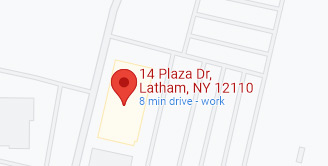The Fruits of Late Summer
 August is a bittersweet month. Blackberries and pears have ripened, and the phlox and black-eyed Susans are in full bloom.
August is a bittersweet month. Blackberries and pears have ripened, and the phlox and black-eyed Susans are in full bloom.
I think of industry friends who are relaxing now with their families along the shores of Saranac Lake, or an island in Moosehead Lake, or near a sandy beach on Cape Cod, all the way down to the Outer Banks, and even Key West. But, already, the crickets and the softer afternoon light signals that the days are getting shorter.
There are many great poems about Summer. One of my favorites is by the Welsh poet Dylan Thomas, who ends his summertime poem “Fern Hill," about lost innocence and remembrance past, with:
Oh as I was young and easy in the mercy of his means,
Time held me green and dying
Though I sang in my chains like the sea.
I’ll admit, it’s challenging to segue from late summer vacations and a poet from Wales to a propane supply update, but I’ll stick with the perennial theme of change within our industry and what it means for us.
Propane inventories typically peak in October, so we’re getting near the top of the inventory roller coaster.
Some Numbers:
- The current propane inventory level is 92 million barrels, which places it just under last year’s level at this time. In fact, if it weren’t for last year’s record level of 105 million barrels in November, everyone would be talking about how staggering this number is for only August. We are already more than 35% above the five-year average. And, with two or three more build months, it’s possible that we could set a new inventory record.
- To convert from barrels to gallons, multiply barrels by 42.
What About Our Neighbours, Eh?
- Canadian inventories also saw a huge jump last month, up 35% in western Canada, where things started the build season much leaner, and 26% overall. They are still about 30% behind last year’s inventory level in Canada, but similar monthly builds like last month should quickly close the gap.
The Balance Between Production and Exports
- U.S. propane production is slightly above the two-year average. Of more meaningful significance, propane exports have been largely flat since June.
- The consequence of falling international prices (down this month as much as $59.00 per tonne, or about .12 cpg) and shrinking export margins is that at least eight planned propane cargo ships have been cancelled between July and September. This comes at a significant cancellation cost (in fees paid) of approximately $2,000,000 per ship. And if exports stay flat, largely because Middle Eastern countries like Iran and Saudi Arabia are dedicated to protecting market share over price, then US inventory levels may continue to build into October. Essentially everything is backing up, and it’s becoming increasingly likely that underground storage levels in the Gulf Coast could approach capacity limitations.
- I don’t think many experts expected this to happen.
So, What's the Problem?
If we have lots of inventory in storage, and cargo ships scheduled for export are being cancelled, what’s the problem? Doesn’t that just mean plenty of supply on hand and lower prices?
Yes, but our Gulf Coast export capacity is still there, and expanding. Phillips66 opened a new export terminal in Freeport ,TX. And now that the Panama Canal expansion is complete, the very large ships can transit from Texas to Japan or South Korea in about three weeks instead of five weeks, so they can get more turns per year. And because we are more fully integrated into the international supply, demand, and pricing than ever before, things can change very quickly.
Less than one year ago, a leading international industry expert made the argument that if US export capacity utilization was maintained at current levels, propane inventory levels could plunge to just 20 million bbls. by the end of 2016. This alarming scenario was predicated upon strong international demand (which has not happened), and there is a big difference between "export capacity" and “export capacity utilization”. But if those dual conditions occur at a time when we also have strong seasonal demand, we could see jaw-dropping weekly inventory draws.
The Skinny
For now, we’re in a fairly tight, .15 to .20 cpg range bound situation, where higher prices mean higher production and lower exports, and lower prices mean lower production and higher exports. Global supply of propane is outpacing global demand. Until that changes, prices should continue to remain fairly stable -- at least for another few months. And the current low-price environment also presents a great opportunity to hedge your fixed-price obligations with your customers if you haven’t already done so.
So you don’t need to put your book down, close up your summer cottage, and rush back to work just yet. There’s still plenty of time to relax, and enjoy the fruits of late summer.
NOTE: The views and opinions expressed herein are solely those of the author, unless attributed to a third-party source, and do not necessarily reflect the views of Ray Energy Corp, its affiliates, or its employees. The information set forth herein has been obtained or derived from sources believed by the author to be reliable. However, the author does not make any representation or warranty, express or implied, as to the information’s accuracy or completeness, nor does the author recommend that the attached information serve as the basis of any buying decision and it has been provided to you solely for informational purposes.
© 2011-2017 Ray Energy Corp. All rights reserved. Any reproduction, representation, adaptation, translation, and/or transformation, in whole or in part by whatsoever process, of this site or of one or several of its components, is forbidden without the express written authorization from Ray Energy Corp.

